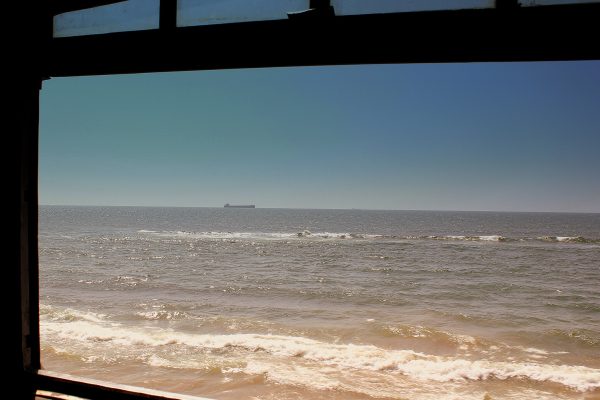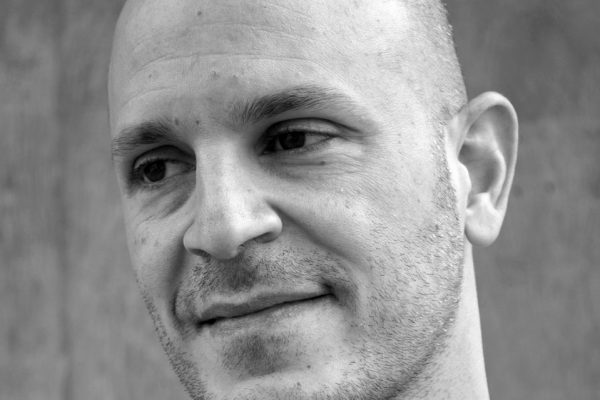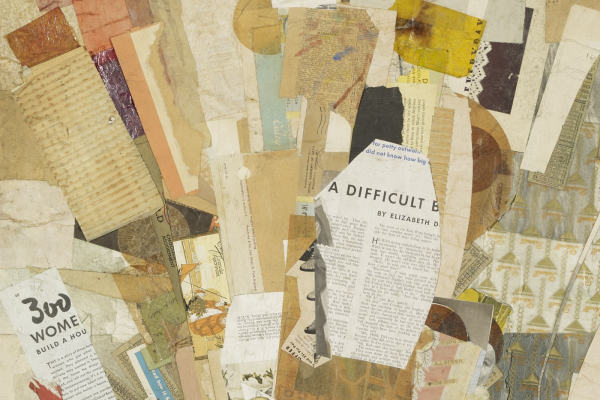“Get into the railroad car,”
wrote Waldo Emerson in 1832,
“and the Ideal Philosophy
takes place at once. . . .
Matter seems compromised.”
Emerson was a bel inconnu
who “snickered at embarrassing moments.”
He had “the mouse in his chest.” It was TB.
The doctor was named Dr. Frisbie.
Waldo “had no taste for comedy,”
wrote Gay Wilson Allen in the biography,
and disliked complex trope.
In Rome, he thought Pope
Gregory XVI was “millinery
and imbecility.”
Nature grew slowly out
of letter
and ser-
mon and jour-
nal, as when he saw “a trail of glowing cinder
beside the track;
the hissing steam made the traveler
stand back.”
Passing freight cars full of timber
“darted by like trout.”
Current history,
art history,
and historiography
address material culture and see
lies and myths, “objects and stories” in a thing
such as a tea-kettle, which
by contrast is also
for Waldo
Emerson a loco-
motive. Where he wrote, “Hitch
your wagon to a star,”
“wagon” may have meant “railway car”
(OED
5b),
while “trees and men whiz by
you as fast as the leaves of a dictionary.”
Harriet Martineau
wrote of Waldo,
“In coaches or steamboats or
any where else that
he saw people of colour
ill-used, he did what
he could and said what he thought.”
Yet Duane
Coltharp calls Emerson’s train
“a celebration of capitalist power.”
This detail
can be found through
libarts.wsu
.edu
/English/Archive/Journals/ESQ
/ESQ.html.
I sat in my auditor’s seat listening
to Laurel Thatcher
Ulrich and Cather-
ine Corman and Jennifer
Roberts holding
forth on background to all this. I did the reading.
(“Objects and stories” above is Ulrich’s coining.)
Waldo had a
“bias toward the concrete,”
wrote Robert D. Richardson Jr. in the biography;
in the subject’s words, the
“din and craft of the street.”
In Liverpool, he “went
to the railroad and saw
Rocket and Goliath and Pluto
and Firefly
and the rest
of that vulcanian generation,”
he said in Journal Q
(1833).
In this nation,
where whistles soon blew
twice a day for Waltham and for
Boston, the first engine names were Best
Friend, West
Point, De Witt Clinton, and E.L. Miller,
although the cowcatcher patent,
#8996, wasn’t till 1852.
As it were a house, a canal, a statue, a picture,
here in America, the railroad creates “an
American
sentiment,”
Waldo wrote; the solid
enough
ground of Nature
—we can’t get out
of it—is stuff:
“He paves the road with iron bars”;
but this material, or Commodity,
alone is “mean and squalid”
while “the mind is a steam shop where power
is generated no matter for what uses.”
And, wrote Lee
Rust Brown, “The transparency
can see
through
the object to
a whole of which the thing
is a fragment,”
as Carlyle was shown the railway cars:
rolling stock: flatbeds, passengers, cabooses—
flanged vehicles along
a stream of worker song
all day
“for the sugar in my tay”
by the destitute. “These are our poems,” Carlyle said.
Indeed by 1849 Waldo
under duress
of writing lecture and essay
himself surmised
he had on the terrain
of Nature become a train:
“I am a literary runner and Lyceum Express.”







